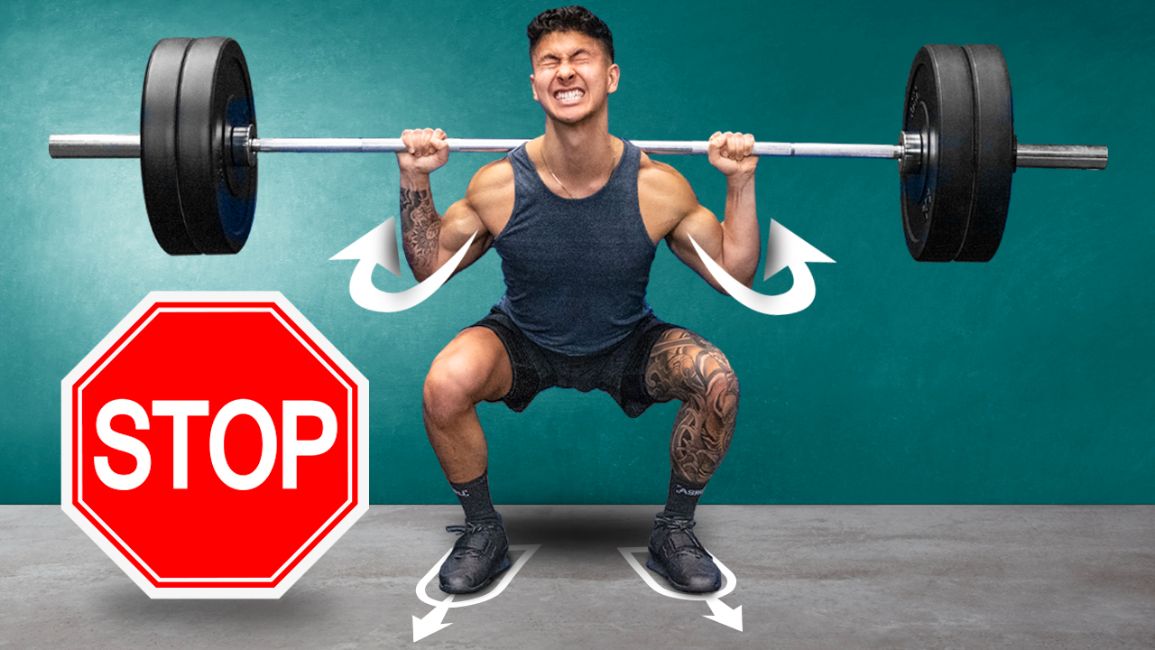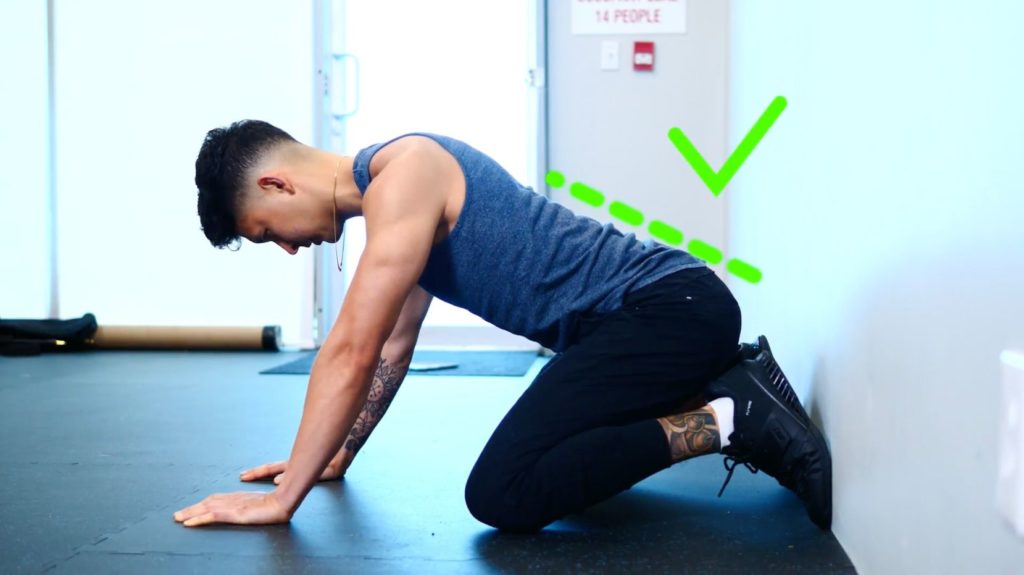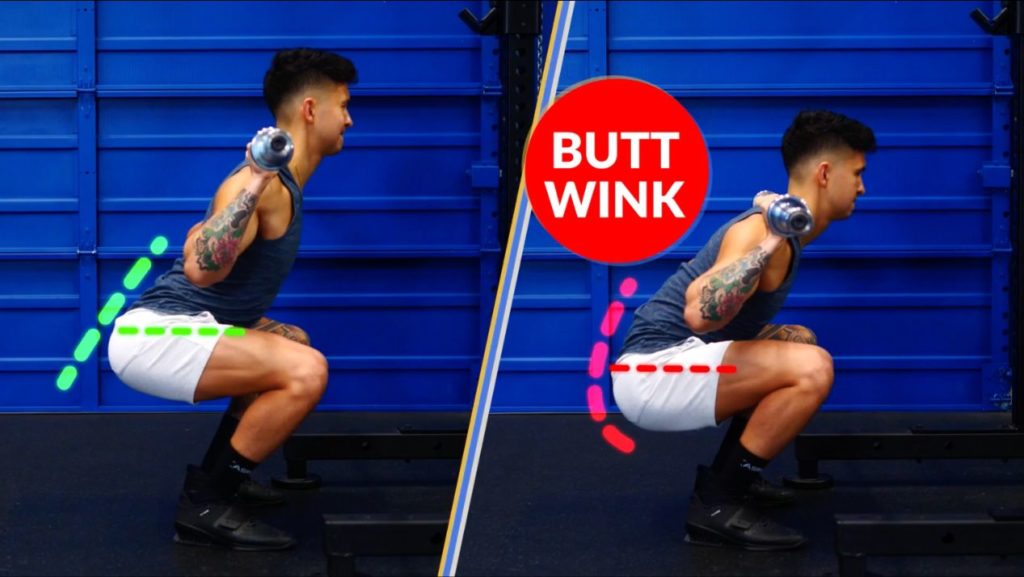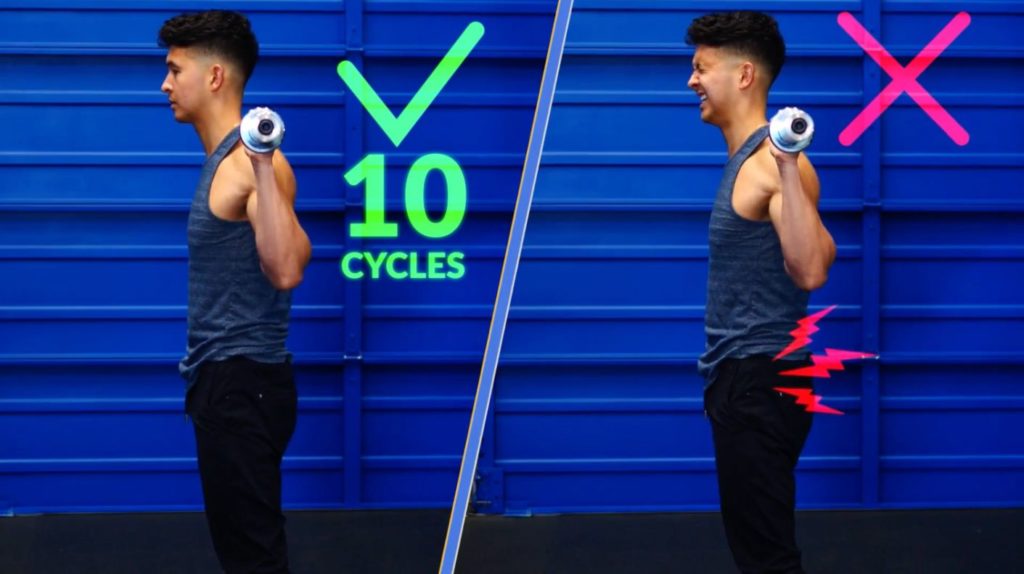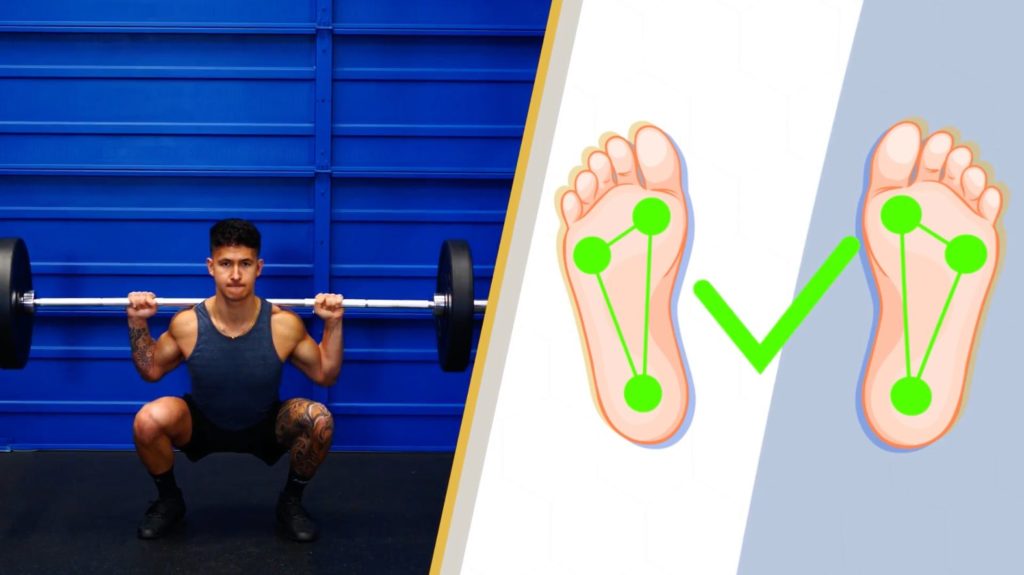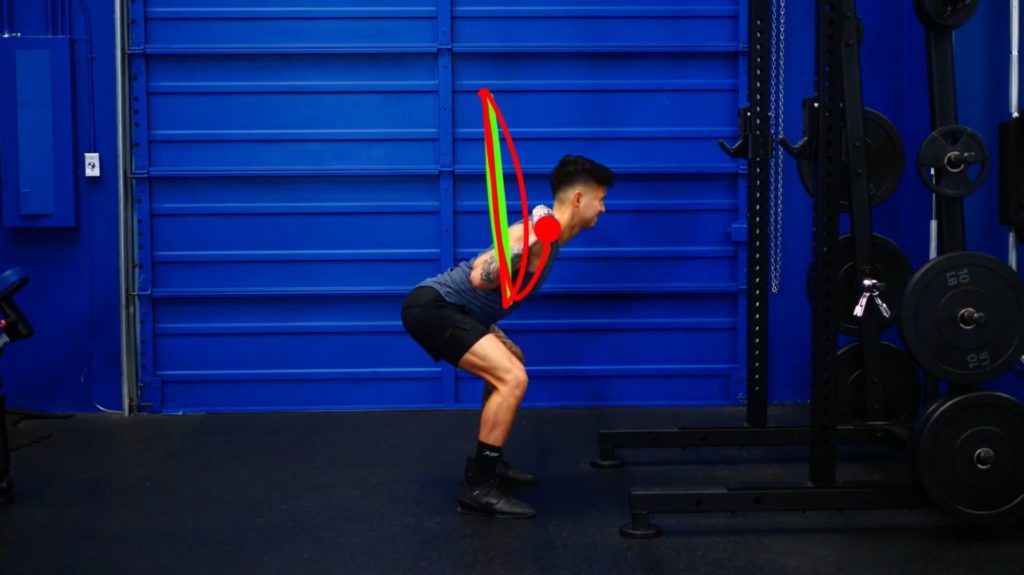STOP Doing Squats Like This (4 MAJOR Squat Form Fixes)
Struggling to progress on your squats? Plagued by a niggling tightness in your lower back post-squats? You might want to relook your squat form. This article covers the 4 major fixes that'll take your squats to the next level — fast.
If you want to keep your joints healthy and maximize your strength, then you have to pay attention to your squat form — and stop squatting like this. You’re probably wondering, “Jeremy, like what!?”
Well, to the untrained eye, you wouldn’t notice anything was wrong with this. But in reality, there are 4 key squat form mistakes I’m making here that you’re very likely making too without even realizing it. Let’s dive into what those are and how to fix them to get you a safer and stronger squat right away.
Of course, you shouldn’t only learn about form tips related specifically to your squats. Every aspect of your training will benefit if you take the time to understand and correct the common lifting mistakes for each muscle group. And that's precisely what I cover in every single one of my programs - so you experience the quickest gains possible. Interested?:
Click the button below to take my analysis quiz to discover the best program for you:
↓
Form Fix #1: Squat Stance
The first mistake has to do with your hip structure. It affects two things in your squat form. First, what your optimal foot width is, and, second, the best foot positioning for your squat. This is actually something I covered in a past deadlift article which I’d highly recommend you check out here, but the same concept applies here to your squats.
For example, some people can naturally squat with a narrow stance. Others, such as those born with relatively deep hip sockets, will have to squat with a wider stance. Similarly, depending on their hip structure, some will be able to squat with their toes facing straight. And others will have to turn their toes out at an angle in order to reach full depth.
See: if you try to use a squat stance that doesn’t fit your anatomy, you’ll often have trouble getting deep into the squat. And may even feel a blocking or pinching sensation at the hip that stops you from getting any deeper. This is your body’s way of telling you something needs adjusting.
How To Find Your Optimal Squat Stance
There is a simple test we can do to figure out what your optimal stance is.
First, we’ll figure out your foot width. Get onto all fours with your hands directly under your shoulders, knees under your hips, and ideally with your feet against a wall. From here, try to sink your hips back into heels as deep as you can without rounding your lower back. Make note of how that feels and how far you could go.
Then, simply play around with it. Try widening your knees and feet a little bit and see how that feels. Keep doing this until you find that sweet spot position that feels the best and allows you to get the deepest without rounding at your lower back. Once you’ve found that position, stand up and note how far apart your feet were.
Then, from here, either with your bodyweight or under the bar, squat down with your toes and knees straight out and see how that feels. Then try it with your knees and toes pointed out more. Experiment and find what foot angle feels best and enables you to squat the deepest. And that will now be your ideal squat stance.
Form Fix #2: Butt Wink
By the end of that test, you should have a good idea of the best squat setup for you. That said, even with that proper setup, you may be guilty of making the next squat form mistake.
Take a look at these two shots of the bottom of a squat.
Can you notice any difference? If you take a closer look at the lower back on the shot on the right, you can see that:
- It rounds AND
- The pelvis pulls under the body
Whereas for the shot on the left this doesn’t happen. This is a phenomenon known as "butt wink". Now, this may be perfectly fine for some individuals. But for others? It can put a lot of harmful forces on their spinal discs. And, worse still, in theory, this could eventually cause a disc bulge in this area (after many years).
Of course, there are ways to avoid butt wink. And I'll share them with you in just a bit. Before that, though, let’s first determine how serious of an issue this may be for you.
Is Butt Wink Bad For You?
We can do so with a simple screening test created by back pain expert Dr. Stuart McGill. Below, see what Dr. Stuart had to say:
In the beginning of the experiment, they’d put a 45lb Olympic bar on their back and they would do pelvic tilts. Extension, flexion, extension, flexion.
And they did 10 cycles, you know we had to stop the experiment, Jeremy, because it caused so much back pain? So then I learned, I just developed a screening test by accident for “is butt wink ok for that lifter?”
So, if they can do 10 cycles with the bar back and forth with zero pain and they’re not going really heavy and just squatting for the hell of it ... I don’t really have an issue with that. Except, I will say to them, “eventually if you want a lifetime of good health, you’d be wiser to not smoke, wear your seatbelt, brush your teeth, and avoid butt wink”. How’s that?
As you can tell, sometimes, there are no black and white certainties when it comes to lifting. This highlights the importance of a good training program. One that'll show you how to determine if a particular form is suitable for you — and what you could do to rectify it if it isn't. Built With Science programs do all that (and a whole lot more). If you're interested:
Click the button below to take my analysis quiz to discover the best program for you:
↓
Tips That'll Help You Minimize Butt Wink
So, tested "positive" for that butt wink screen? Or would just like to err on the side of caution? There are two things you can do to minimize butt wink.
The first thing is to simply limit your range of motion. For example, if you try to go below parallel and notice significant rounding, then it might be a good idea to just limit your squats to parallel.
However, oftentimes, butt wink is an ankle mobility issue. If you have stiff ankles and try to go into a deep squat, your lower back will have to start rounding once you reach the end of your ankle mobility. That's because your lower back is "compensating" for your lack of ankle mobility — in a desperate attempt to help you get deeper.
To improve this (and, ultimately, your squat form), try squatting with your heels on plates. You could also use lifting shoes. See if elevating your heels helps. If it does, great. Continue doing that while working on improving your ankle mobility with a few drills that I’ve outlined in a past mobility article here.
Form Fix #3: Foot Stability
Alright, so we’ve got our stance down. We’ve also figured out butt wink. It's now time for the next squat form mistake, which is something almost everyone overlooks. But is crucial if you want to learn how to squat properly. And it has to do with your feet.
Try standing up on one leg with your other knee bent behind you. Are you able to hold this for at least 25 seconds without falling over? The Russian Training Philosophy, which has bred countless elite level powerlifters, states that if you can’t do this then you don’t yet have the right to squat with the bar.
This is because your feet play a major role in stabilizing your body as you squat. As you perform the squat, you’ll make slight movements forward and back and left and right that our feet will have to respond to and correct.
Without adequate stability from your feet, your body will seek it elsewhere. And this often leads to compensations that can cause excessive stress on the lower back and other areas, especially when working with heavier loads.
How To Improve Foot Stability
To help improve your foot stability, there are two things we can do. Back pain expert Dr. Stuart McGill takes you through the first:
Jeremy has already explained the 1 legged test to test the foot athleticism in the squat. If you struggled with that drill, here’s a drill to improve that, the leaning tower. Begin by spreading the toes and rooting in the ground. Through the ankles, move the center of mass forward now leaning tower back onto the ankles and heels, making your foot as big as possible for controlling the thrust line from the weight down to the body.
The idea is that as you’re squatting, to control the position of the weight, you can use your ankles to lean forward or hips to and knees to lean back. The problem with some lifters is that they use their lower back to control the thrust line. It’s especially important for them to gain the foot athleticism through the leaning tower. Then the idea is that they move onto the back squat with an unloaded bar on the shoulders and practice the leaning tower there. And then, loading the bar with weight for squats.
The second thing you can do is pay attention to how you distribute your weight as you’re squatting. Before you squat down, grip the floor with your feet. Spread your weight across these three points:
- Heel
- Base of your 1st toe
- Base of your 5th toe
This will form a stable tripod structure. Then when you perform your squat, rather than shifting your weight more towards your heels or toes, make sure each of these 3 points remains in contact with the ground with the weight distributed evenly among them. Doing so will increase your stability, improve your squat technique, and lead to a safer, stronger squat.
Form Fix #4: Bar Path
So, with your feet now stabilized, it’s important that you avoid the last squat form mistake. And it has to do with your bar path. To lift the most weight and avoid excessive stress on the knees or lower back, the bar should travel straight up and down as you perform the squat.
However, a common mistake lifters make is letting their chest fall forward and hips rise during the ascent. This shifts the bar forward from the mid-line, potentially placing more stress on the lower back. What causes this?
For starters, weak quads relative to your glutes may play a role in this. But it usually isn't the main "culprit". According to a 2014 analysis of the squat by Myer and colleagues, it seems that suboptimal motor recruitment patterns are usually the main issue.
But wait. What does "suboptimal motor recruitment patterns" even mean? Well, this refers to the inability of the body to turn on the right muscles at the right time to maintain proper form. This, unfortunately, can’t be fixed by simply strengthening a muscle.
Re-learn The Squat To Fix Your Bar Path
Instead, we need to essentially re-learn the squat. The goal is to get your hips and chest rising at the same rate to keep the bar path straight up and down.
To accomplish this, for at least a few weeks, swap out your regular sets of squats for what’s called double paused squats. This technique will force you to:
- Maintain the proper position
- Recruit the right muscles at the most crucial parts of the squat
To perform it, squat down how you normally do. But then at the bottom position, pause for a second. Then, while keeping your chest upright, push out of the bottom and then pause again about halfway up before completing the rep.
But to help further reinforce the proper form, before you squat down, tuck your elbows into your sides, squeeze your shoulder blades together, and pull the bar down into your traps. Then, on the way up, think about driving your upper back up into the bar as if you were trying to push it up towards the ceiling.
When you apply this, you will likely have to lighten the weight considerably to break out of old habits. But after a few weeks of this, your squat form will start to feel more "natural". And that's when you can switch back to regular squats — if you wish to do so.
Takeaway
So now, look back at the two squat form variations I first showed you in the article. See if you can spot some of the mistakes with your new knowledge.
Hopefully, you now see the importance of the finer details when it comes to every exercise you do. It’s not just about choosing the right exercises but also performing them in a way to get the most out of them while avoiding any potential injury or setbacks down the road.
It’s so important that you get this right from the start. And it’s why I focus so heavily on that, not just within the articles I put out, but especially in the Built With Science programs I offer.
For those interested who want to maximize your efforts and start transforming your body today, take my analysis quiz to see what step-by-step program is best for you and your body below:
Click the button below to take my analysis quiz to discover the best program for you:
↓
Been messing up your squats? Then, chances are, your deadlifts could probably use some work, too. So, check out this article next. Thanks for reading, and I’ll see ya next time!






